Uniforms help get the job done
Learn which Carolina employees wear a body camera, a helmet with a light-sensitive lens and a vest that reads “Free hugs & kisses.”
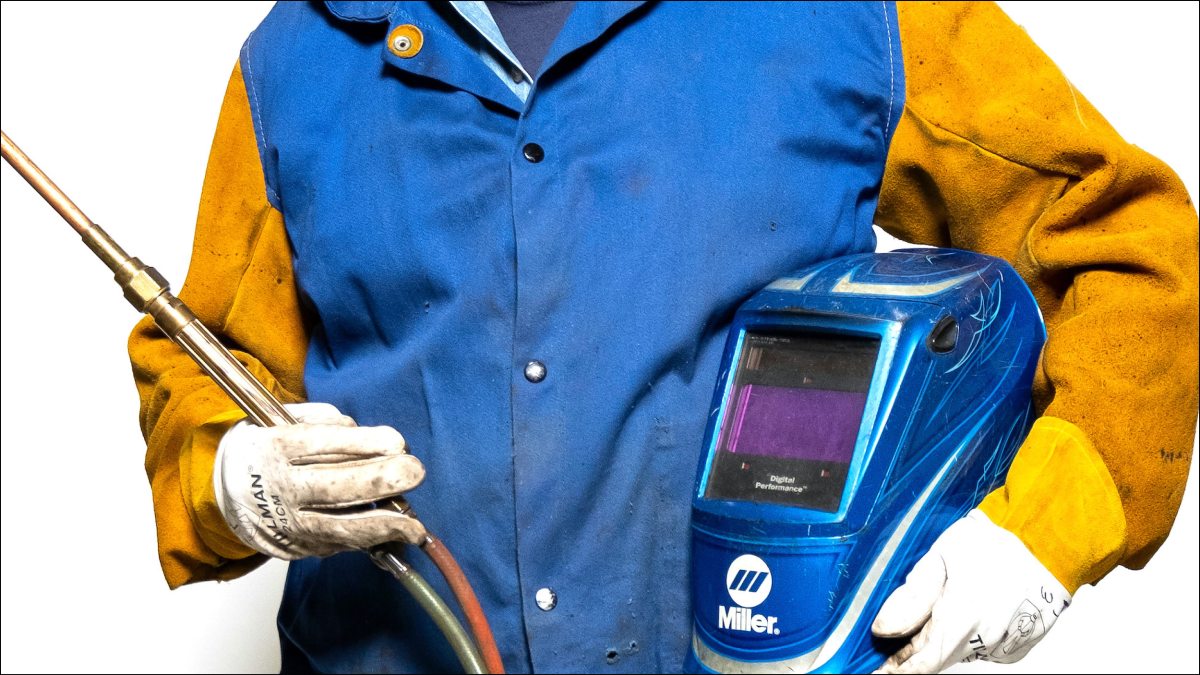
We wear uniforms at work, whether formal or informal, for many reasons. It could be to project a professional image or for protection, job efficiency or simply to identify ourselves as Carolina employees.
The uniforms are as varied as our occupations — coat and tie, dungarees and orange safety vest, scrubs and a bonnet, a hazmat suit and booties — just to mention a few. Around campus, it’s common to see “UNC” or an image of the Old Well embroidered on clothing or stamped on a name tag to show that we are part of the University.
Meet six Carolina workers and get the details about their uniforms and the jobs they do in support of the University’s mission.
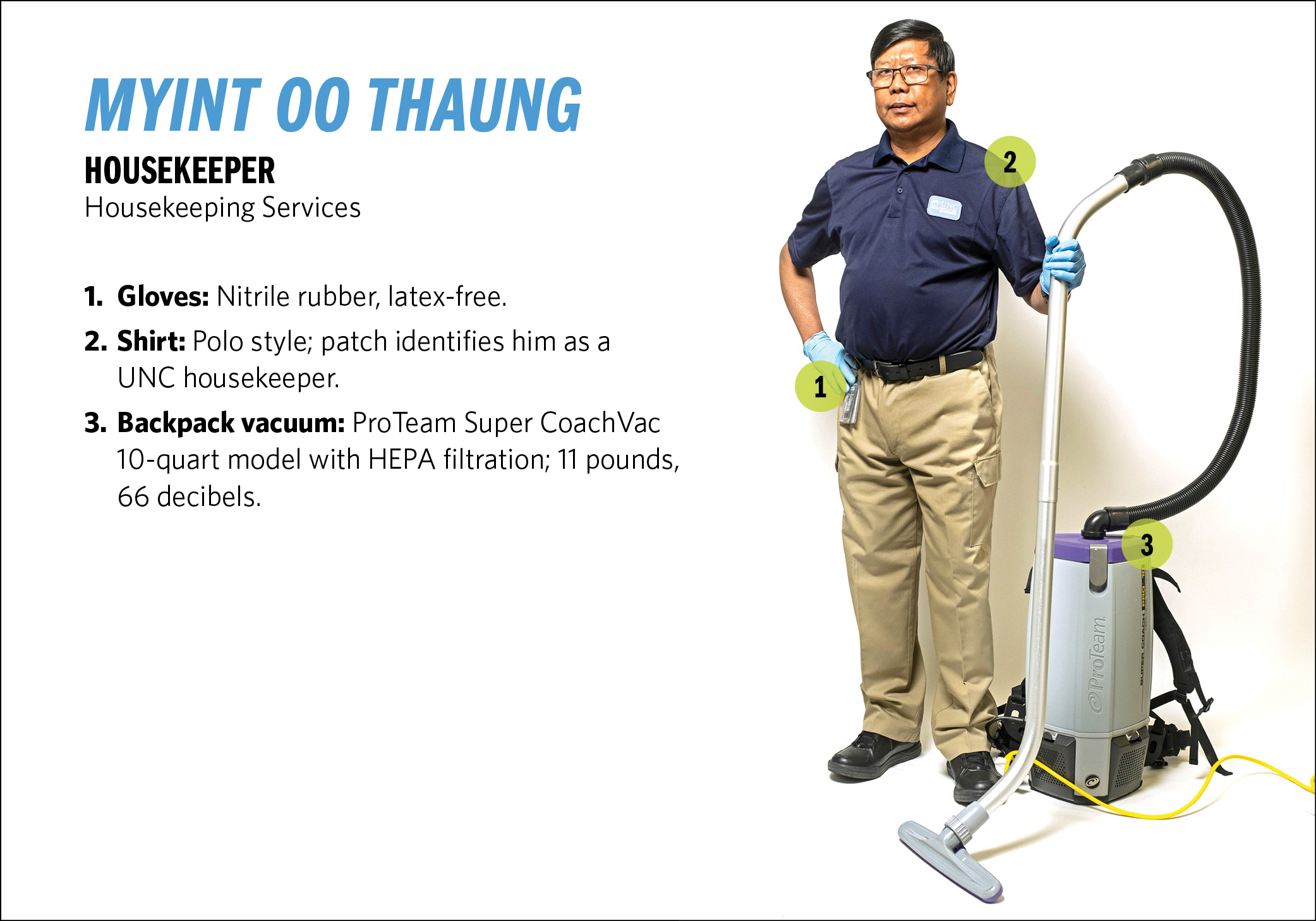
A housekeeper since 2012, Thaung cleans seven buildings in Zone 16, working 4 p.m. to 12:30 a.m. Like other housekeepers, he wears a canister vacuum with a telescoping wand, 48-inch hose and 50-foot cord that allows him to efficiently cover a lot of space. He calls the vacuum his “No. 1 tool against dirt.”
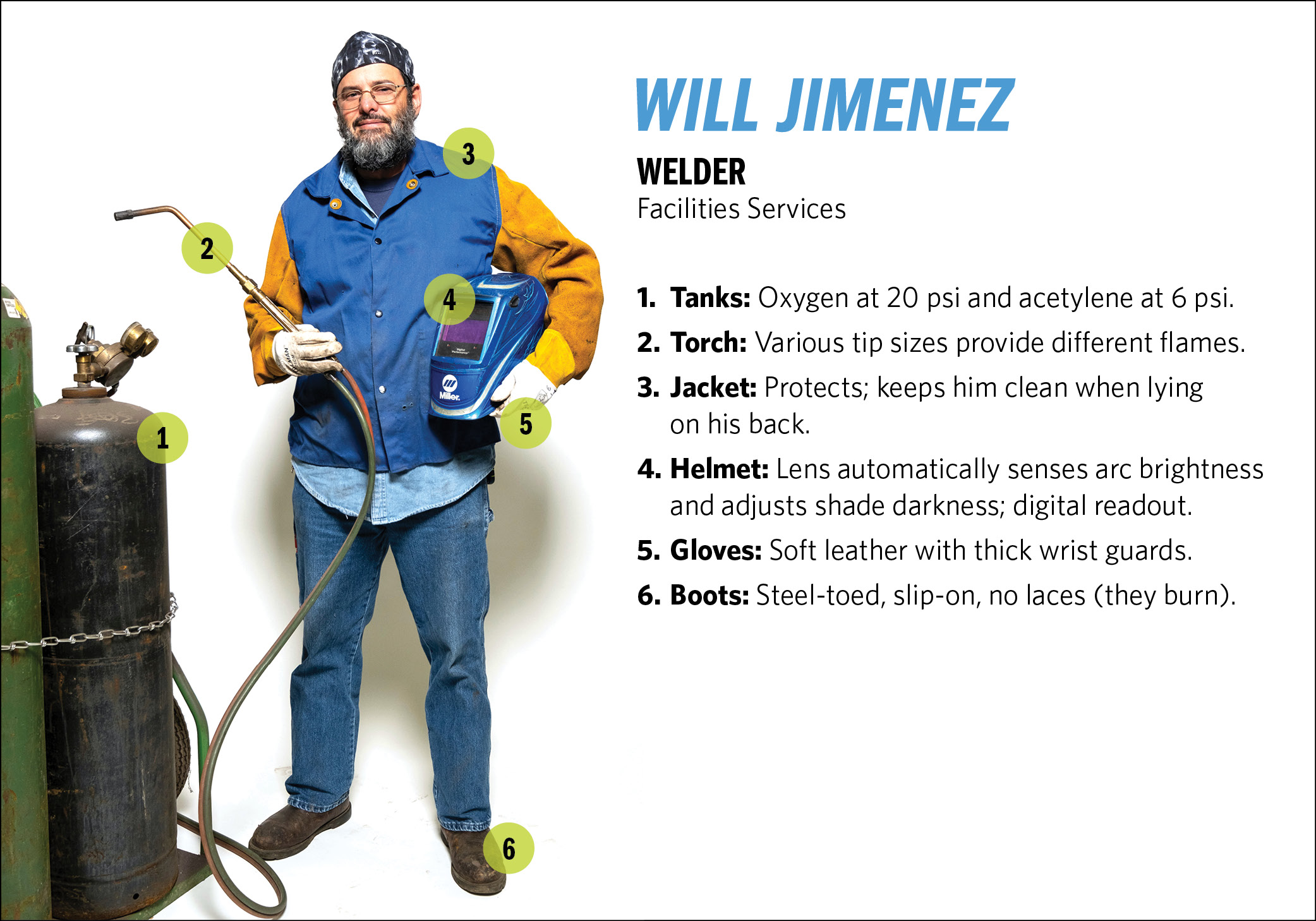
At the Facilities Services Plumbing Shop off Airport Drive, Jimenez uses a torch and an oxygen-acetylene mix from two large, heavy tanks secured on a wheeled cart. For jobs around campus, he loads a smaller set of tanks on his truck. The “old-school” tools complement more modern tools such as plasma (ionized gas) cutters for slicing pipes.
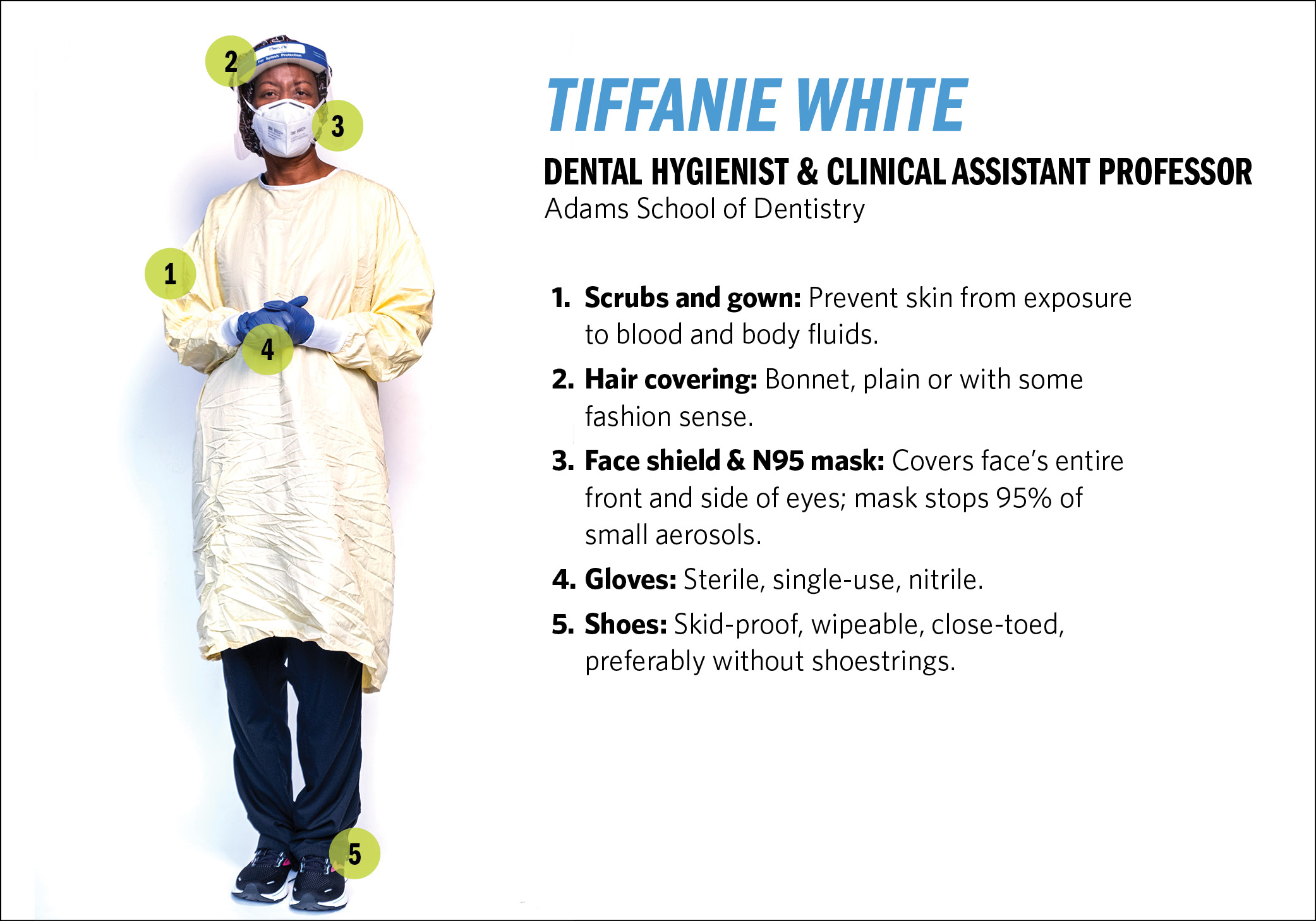
White wears a variety of personal protection equipment. With a protocol developed long before the pandemic brought PPE to public awareness, White protects herself and patients from contaminants by covering any skin in the “splash zone” and wearing equipment that is sterilized after every appointment.
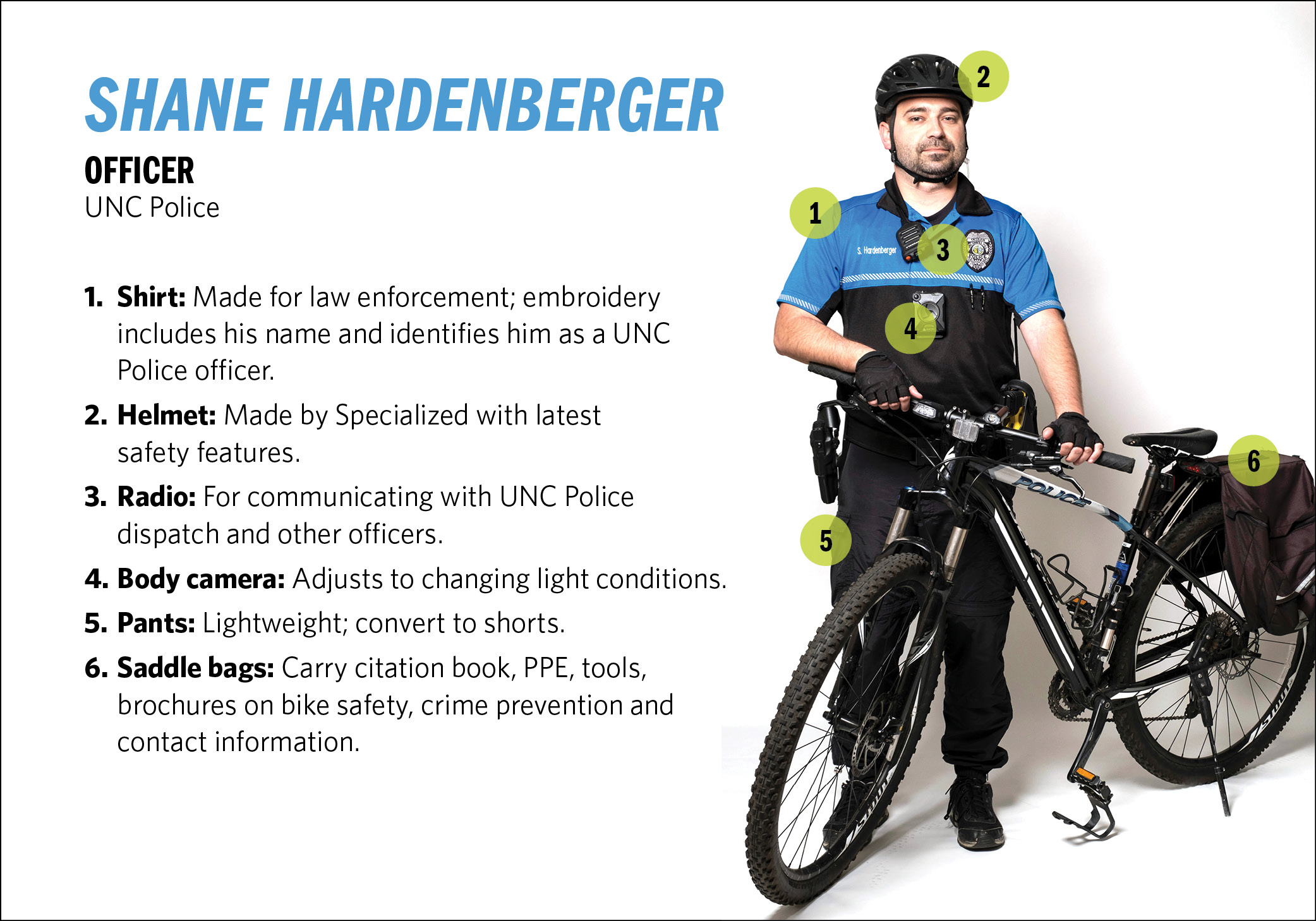
Hardenberger dresses for comfort as he usually rides a bike seven to eight hours during a 10-hour shift, covering 5 to 10 miles a day. The uniform must also make him look approachable. Hardenberger said that bike patrol officers interact with 100 to 250 students, faculty, staff and community members daily.
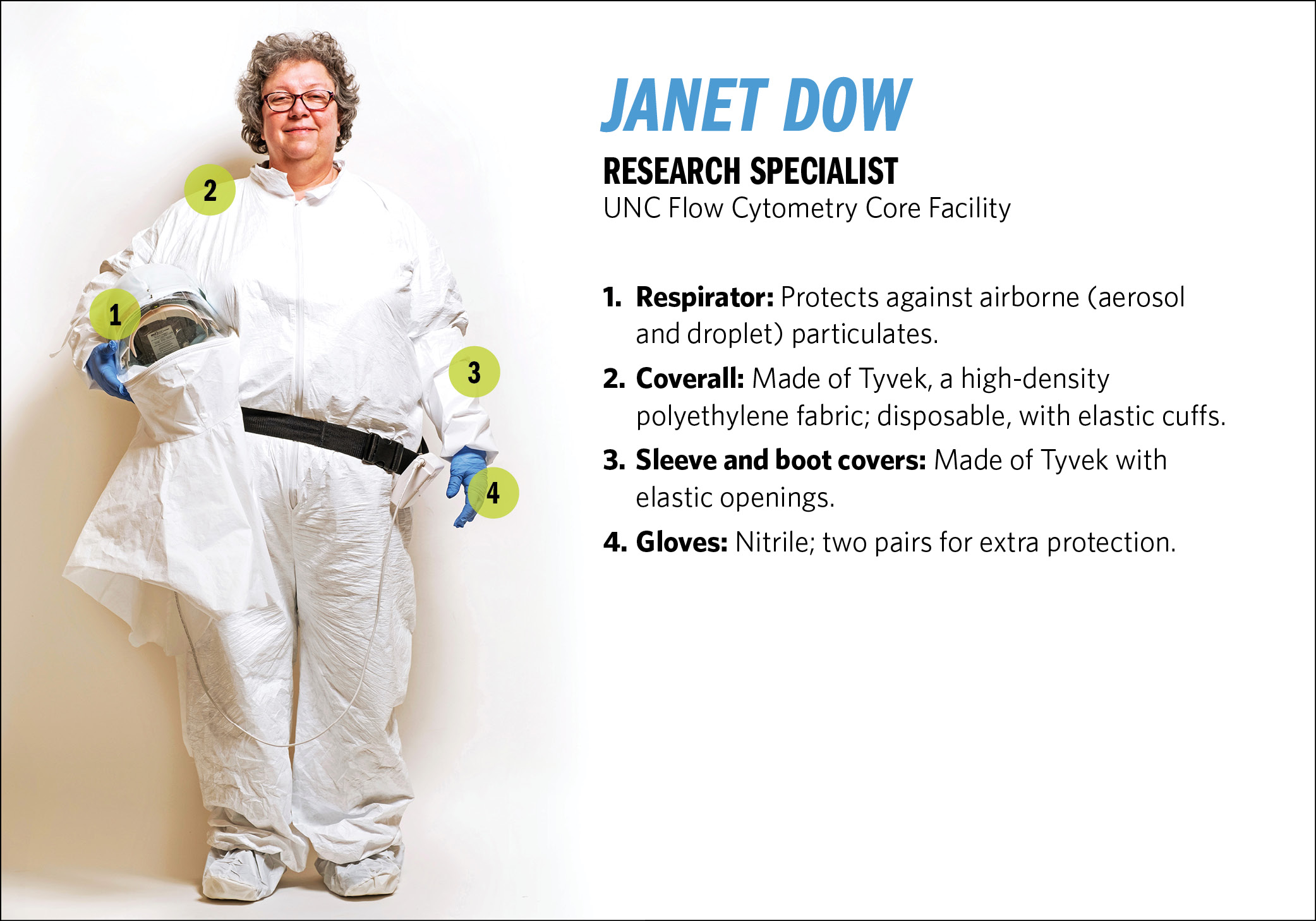
The UNC Flow Cytometry Core Facility in Marsico Hall analyzes samples from 300 labs in health affairs schools and the College of Arts & Sciences. Dow and other workers wear hazardous materials or “hazmat” coveralls and respirators while handling potentially infectious materials in a sterile, air-tight room rated as BioSafety Level 2. It takes about 10 minutes to suit up. Dow cleans the respirator’s exterior with ethanol after each use and changes the filter monthly. She disposes of other protective apparel.
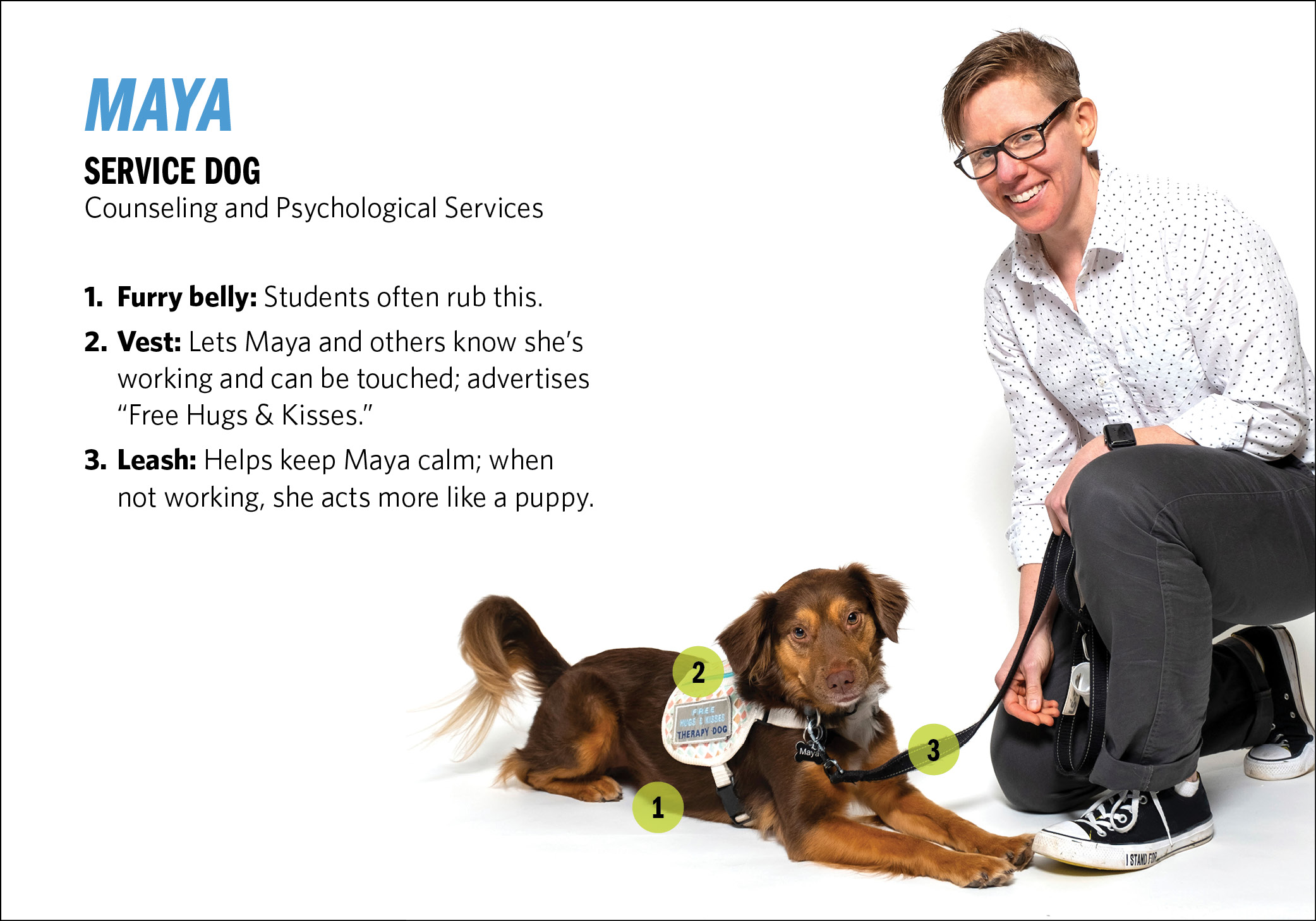
Shown here with Avery Cook, associate director of Carolina’s Counseling and Psychological Services, trained therapy dog Maya has been at CAPS for four years. She sits with students during therapy sessions and mindfulness exercises that help reduce anxiety. Maya and Avery attend student events when they are invited and able. Maya works 8 a.m. to 5 p.m. most days, then goes home with Cook.




